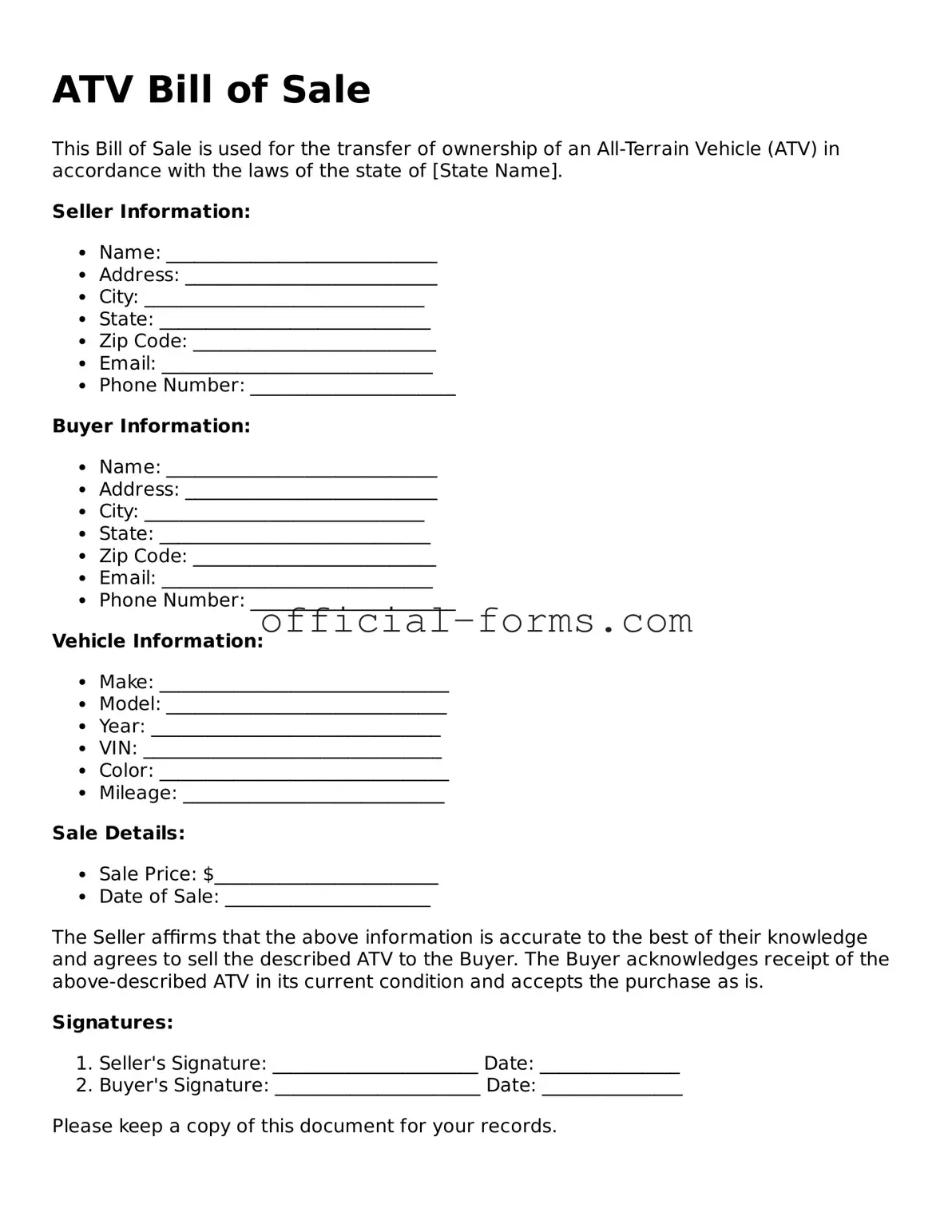Attorney-Verified ATV Bill of Sale Template
An ATV Bill of Sale form is a legal document that records the transfer of ownership of an all-terrain vehicle (ATV) from one party to another. This essential paperwork protects both the buyer and the seller by providing proof of the transaction and detailing important information about the vehicle. Understanding the components of this form can help ensure a smooth and transparent sale process.
Open My ATV Bill of Sale Now
